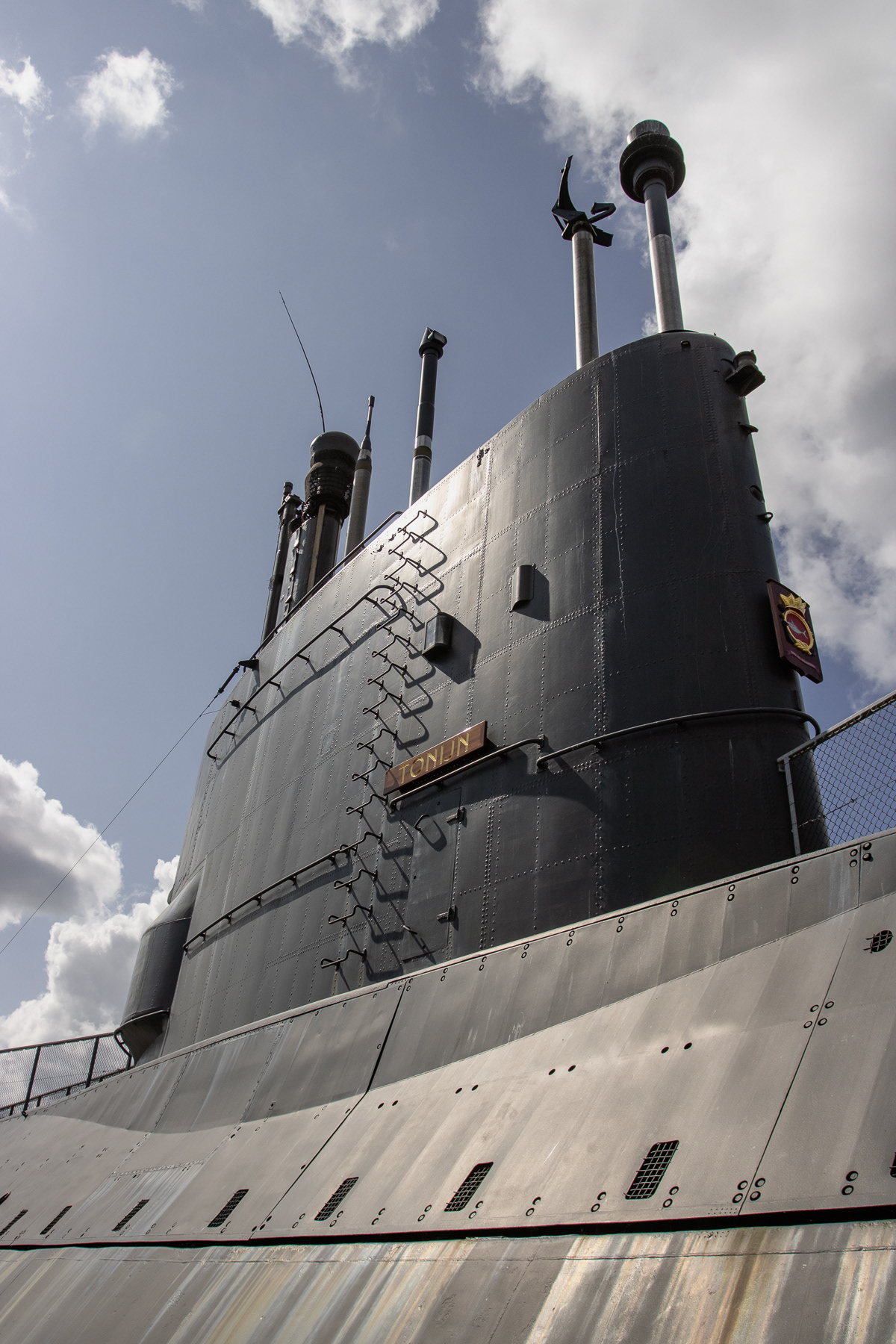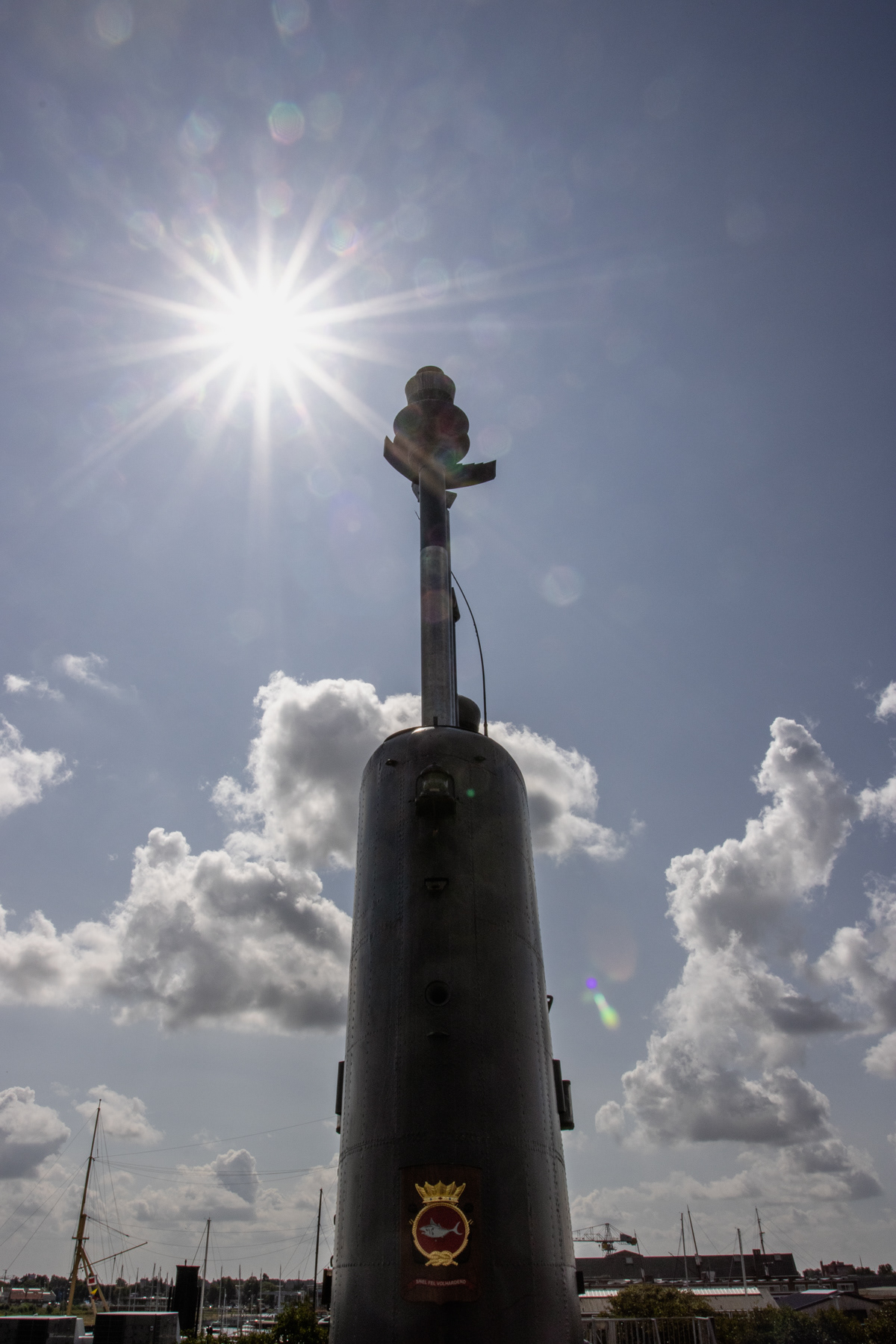The sail of Royal Netherlands Navy submarine Tonijn (S805). Notice the sets of "toppings" that include the radio antenna, the snorkel, the periscope, radar and the electronic warfare mast.
The pearl of the Royal Netherlands Navy Museum in Den Helder (www.marinemuseum.nl) is the decommissioned submarine Hr. MS. Tonijn (S805). Now resting above ground, it gives visitors a rare occasion to visit the normally secret underwater world of the world's navies.
Harrowing moment in 1979
Launched on 14 June 1965 at the Wilton-Fijenoord shipyard near Rotterdam, the Tonijn (meaning Tuna) served the Dutch maritime interests at the height of the Cold War, from February 1966 to January 1991. During its service years, the most harrowing moment was in September 1979. Fires broke out in the engine rooms and battery power was much depleted. The boat made it safely to Gibraltar Naval Base, with the help of US Navy tank landing ship USS Harlan County (LST-1196). Back in the Netherlands, it was retrofitted and re-entered service before the end of the same year.
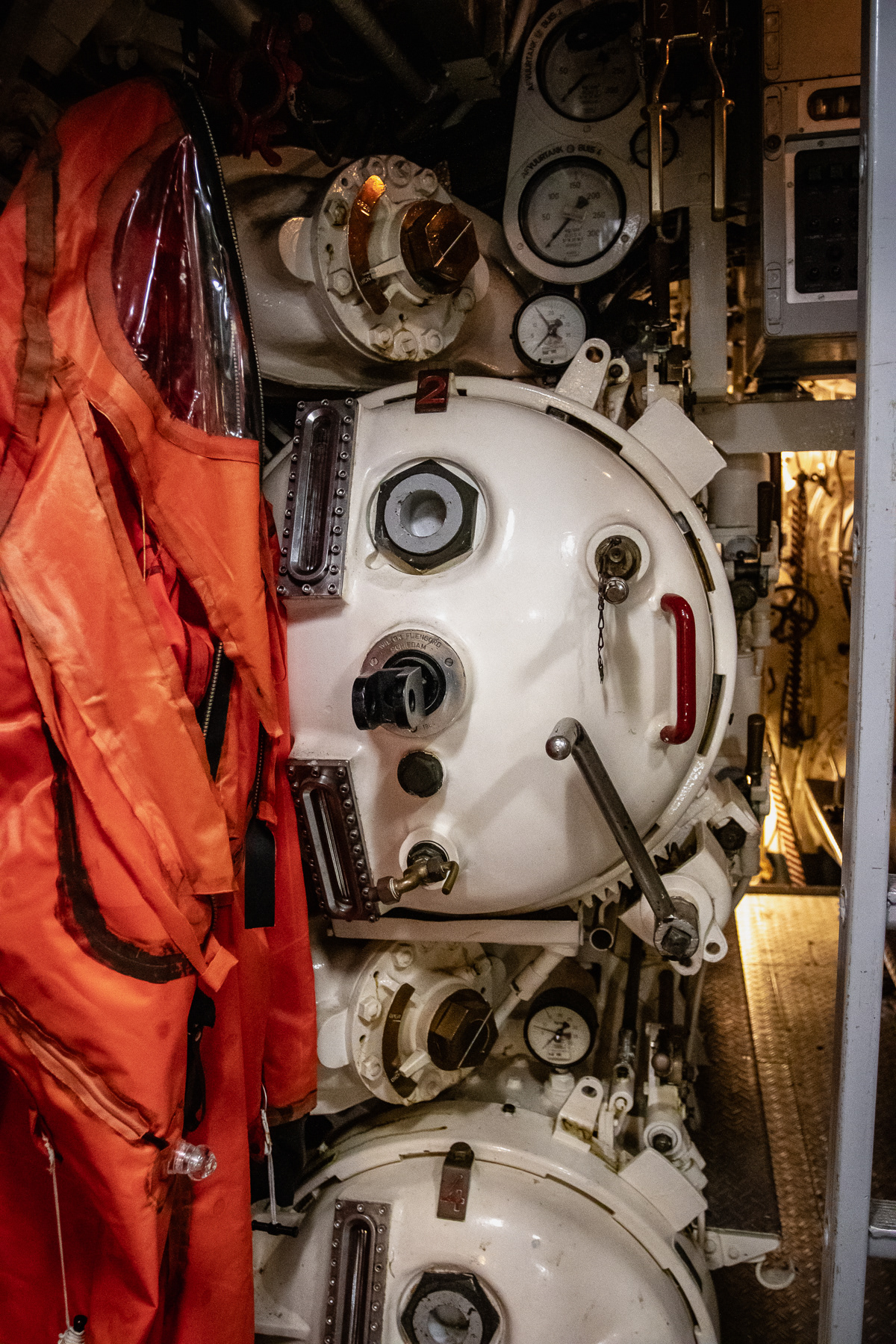
Tonijn has 8 torpedo tubes.

Notice a dummy torpedo at the end of this torpedo tube.
The submarine's design
Hr. Ms. Tonijn has a length of 78 metres (256 feet) and was operated by a crew of 67 men - women were not allowed on board Dutch submarines at the time. Using its diesel-electric engines, Tonijn could reach speeds up to 17 knots while submerged, or max. 14.5 knots while sailing at the surface.
Like the sister ship of its class, Potvis (S804), and the two Royal Netherlands Navy submarines of the Dolfijn (Dolphin) class, the Tonijn was created after a design by the Dutch engineer M.F. Gunning. He developed the 3-cylinder principle for the Royal Netherlands Navy. The inside of the boats' hulls was made up of three cylinders, placed in a triangle form. The bottom two cylinders were used for the propulsion systems, while the top one was for the crew's quarters.
The design created increased stability for the submarines, expanding maximum operational depth to 350 metres (1,148 feet) below the surface - although, according to Dutch navy sources, the submarines rarely went that deep.
Plotter and radar systems inside the control room on board Tonijn.
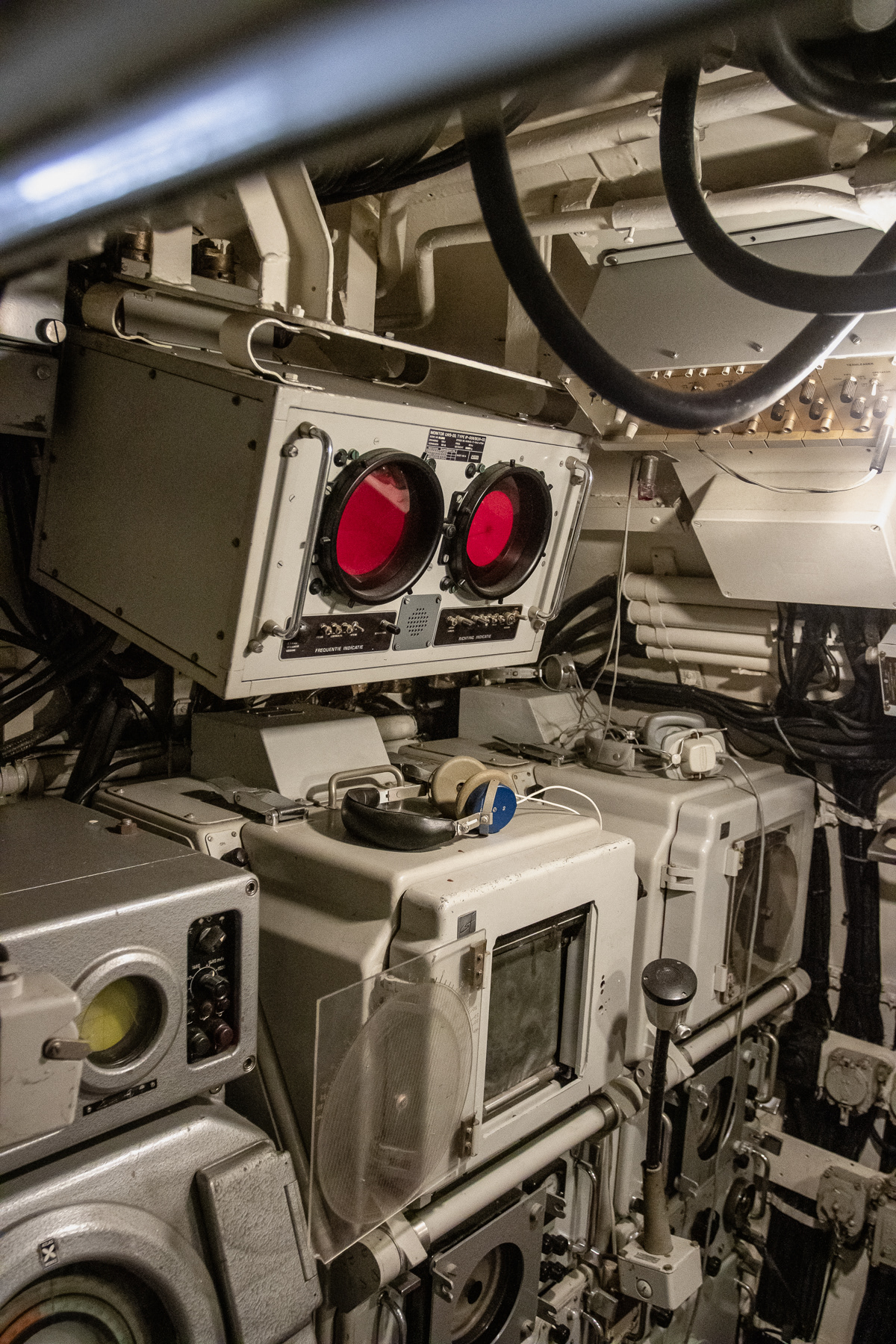
Various electronic systems in the control room of the Tonijn
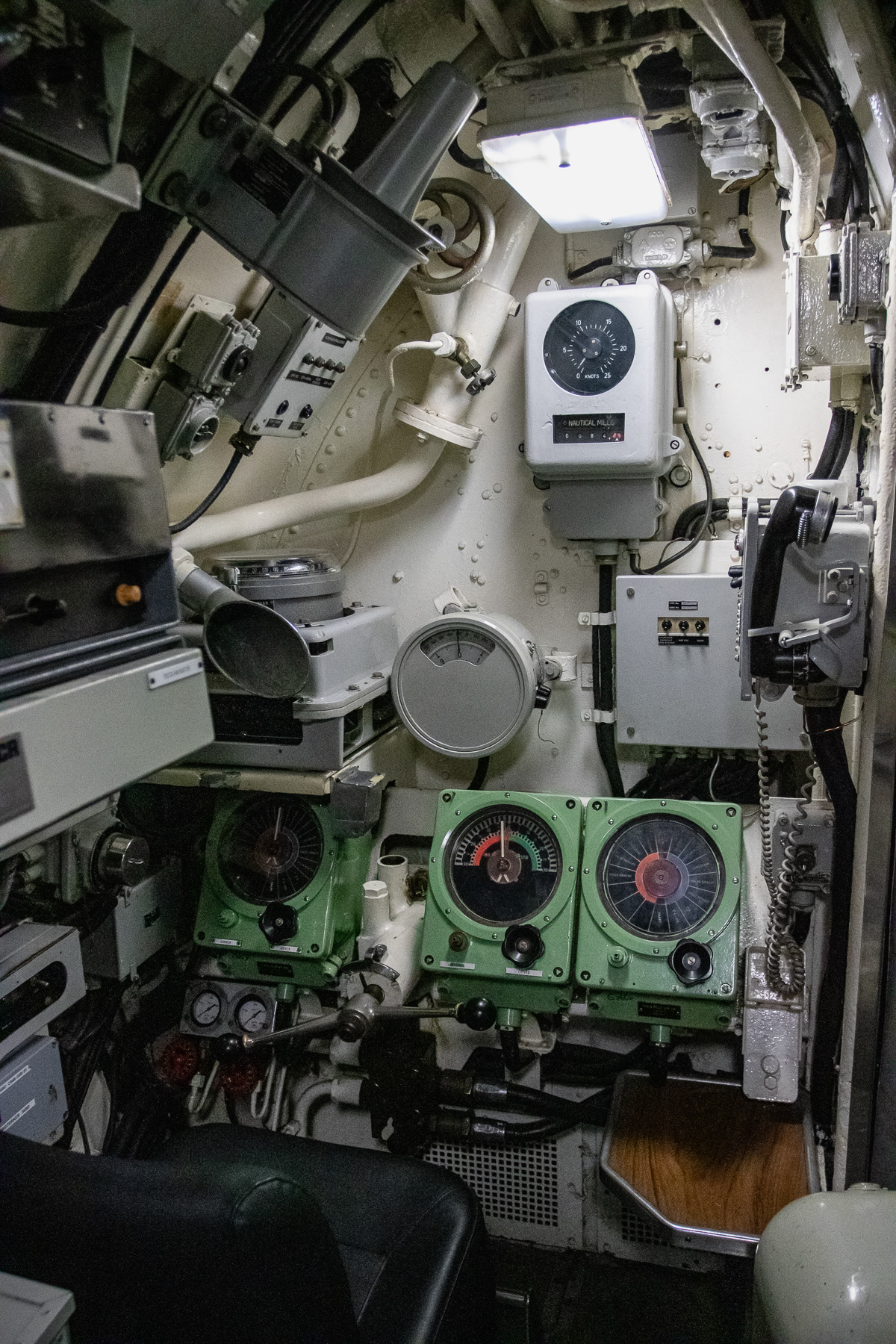
Stearman's seat in the Tonijn.
Engine, propulsion, battery and generator controls in the control room of the Tonijn.

A gateway in the mid section of the boat.
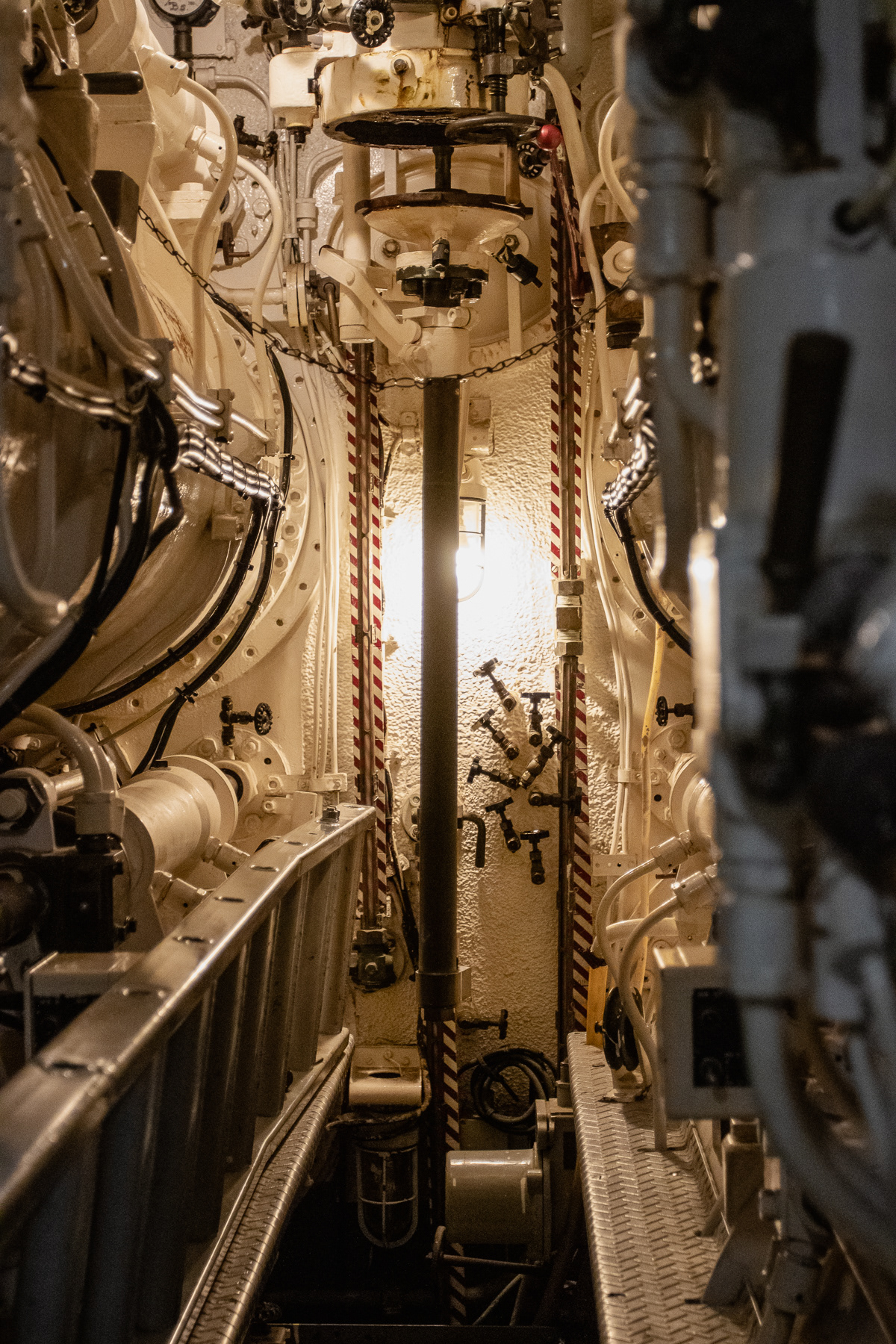
Insdie the torpedo launch room.
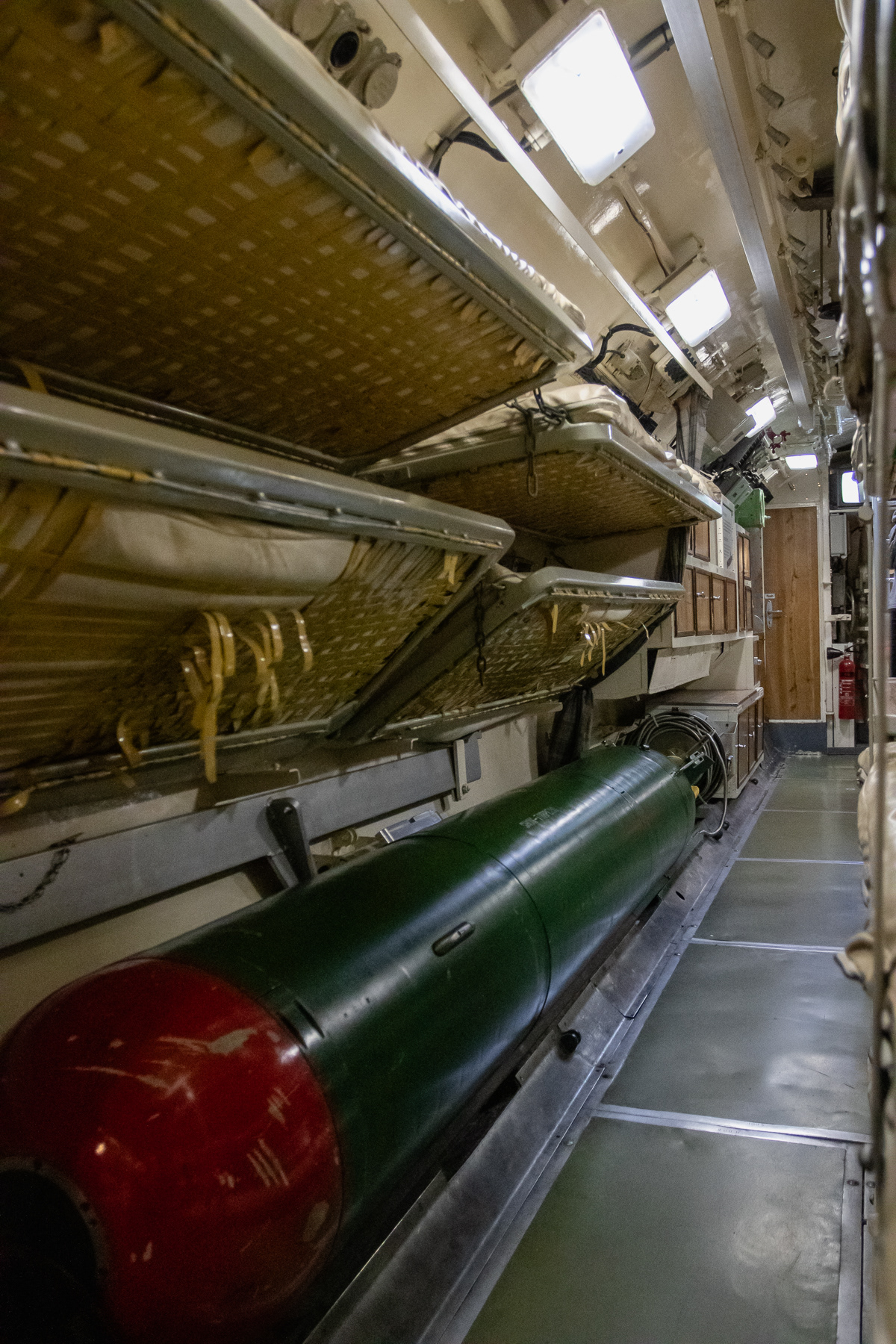
Crew's quarters. The men were sleeping above torpedos.
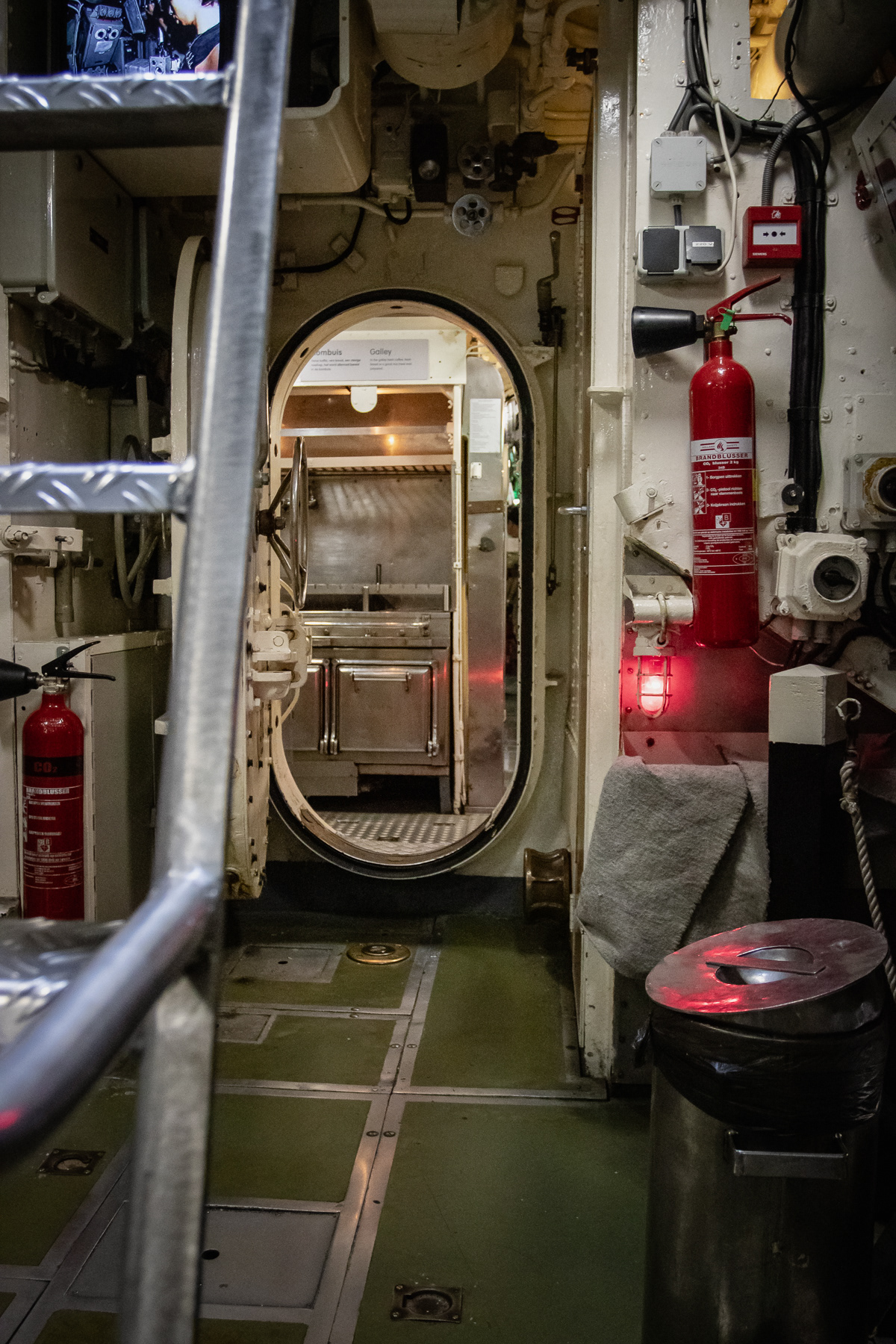
Gateway to the kitchen.
A pressure meter with a sticker of the Koninklijke Marine (Royal Netherlands Navy)
